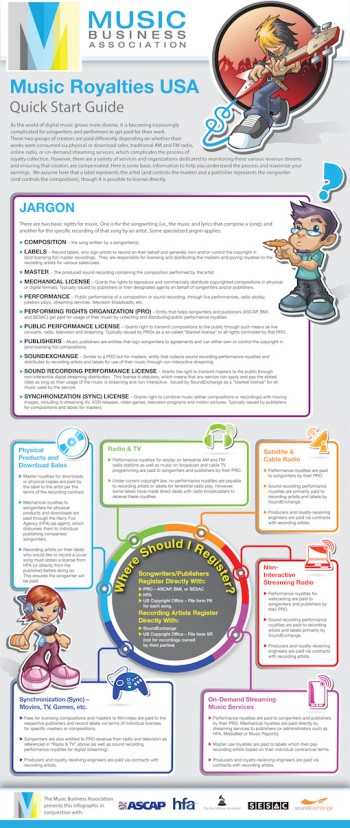This Music Royalty Cheat Sheet Can Help You Understand a Complicated System
If you’re unsure about the language and processes of music royalties in the United States, a new informational graphic should help, which you can see below (for higher-res, go here). The Music Business Association, also known as Music Biz and formerly known as NARM, has put together a cheat sheet with the help of ASCAP, Harry Fox, The Recording Academy, SESAC and SoundExchange.
Every recording artist, songwriter, record label and publisher needs to understand how money flows throughout the music business — especially in an era of access models where royalties aren’t derived just from music sales. (That goes for employees of music companies, too. It never hurts to understand the nuts and bolts of your chosen profession.) The graphic makes clear that creators need to register with various organizations to ensure their creative works are protected and the creator will receive the appropriate royalties.
The business side of music can be downright complicated. The government and courts determine some royalties. Other royalties are paid out according to an artist’s recording contract or, in the case of an independent artist, the distributor’s licensing deal with a digital service. And other royalties are established by negotiations between individual buyers and sellers. Some royalties go through a collection society. Other royalties are routed through a record label or distributor. An accurate map of royalty pathways would be a tangled mess.
And a note: When the graphic says there are “two basic rights for music,” it means there are two copyrights related to music. One copyright relates to songwriting and the other copyright relates to recording. In fact, music has six rights: performance (in public places, on radio and television), distribution (physical and digital distribution, synchronization), reproduction (of compositions for CDs, downloads, etc.), display (usually of song lyrics), derivative works (modifications of the original work) and digital transmission (via streaming service, satellite radio and cable radio).


